Andy Scheurer & the Caviezel bros: Developing the Scheurer G7

This year I had the chance to participate at the Bordeaux 2014 A-Class Europeans, and thanks to the help of Andy Scheurer and Sandro Caviezel I got to sail the G6 and race in the A-Class racing for the first time.
It was a great sailing and learning experience, the A was all I expected to be and I got hooked even more with the boat. I also got to know people that had been part of the Class for many years and still fully involved like Andy Scheurer, Piet Saarberg & Scott Anderson.
Getting to know people like Andy Scheurer who has been shaping the sport along other it was great, it reminded me of my grandfather, who spent his life building rowing boats and coaching.
Andy lent me his own boat to race and was ready to help at any time. Seeing him so happy after the regatta and on the hard work done for the new G7 was one of the highlights of my trip. Photo left: Scheurer G1 “Fighter” , Circa 1976. 2nd Image above: G4 ‘Woody’ version.
I got in contact with Sandro when he was sailing the 18HT as he was sending material to publish in csn. The 18ht Class didn´t survived but he migrated to another light carbon machine, this time the single handed A-Cat.
Sandro and his brother Daniel had both professional Eng background that helped to developed the Scheurer G7 as Andy got them involved in the project.
It ended being a quite successful partnership with Andy re launching he is already winning floating mode G6 platform to the G7 foiling mode. After a few months of development Sandro got a 5th overall at Bordeaux and the European crown.
Below some background on the Andy’s A-Class lifetime project and the G7 development plus the Scheurer A-Class evolution gallery from 1976 to date.
——————————————
——————————————
Interview with Andy Scheurer , Sandro & Daniel Caviezel.
— CSN: When did you guys started sailing A-Class and why?
Andy Scheurer: I joined the A-Class in 1975. I guess I joined the A-Class for the same reasons as many others: You don’t need a crew which gives flexibility to go sailing whenever I had time. At that time Dieter Melcher basically started and pushed the A-Class in Switzerland.
— For how long Andy has been involved with the Class and building As?
AS: I built the first A in 1976. This was the “Scheurer Fighter” (G1). At the same time I was building the Tornado (1972-1993), so I did not continue building As after the G1 until the G2 in 1992/93.
The G3 followed in 2000 and Peter Tobler won the European Championship with the G3 in 2002.
In 2002/03 I built the G4 and in 2006/07 the G5 was launched. The G6 was a modification of the G5 hull shape and was built in 2009/10.
On the G6, Landy became European Champion in Garda, Vice World Champion and Vice European Champion in Barcelona. Finally in 2014 I built the G7 and Sandro became European Champion on the G7 in Maubisson.
Sandro Caviezel: I started sailing the A-Class catamaran in winter 2012. I began sailing catamarans in 2008 with a 18HT catamaran. At this time we had quite a strong fleet in Switzerland and Italy. The class got smaller and smaller.After Bimare lent me an F16 (Prototype) for the F16 Worlds 2011 in Maubuisson, I sold my 18HT and bought a Falcon F16. The F16 worlds 2011 were really great.
As the Olympic catamaran wasn’t selected yet so we kept sailing the F16 where I got in contact with all the top sailors like Daren Bundock, Jason Waterhouse, Carolijn Brouwer and many more…
I really liked the high level racing and in 2012, we tried our best at the F16 Europeans on beautiful lake Como.
We had some great racing with the F16 and the class itself is really great but we decided then to go the next step.
A-Class: I always looked at the A-Class as we have a strong class in Switzerland and as the A-Class got more and more exiting to sail (downwind trapezing for instance), my brother and I decided to sell the F16 and go for an A-Cat.
We choose two used Scheurer G6 – that was in Winter 2012 and that was the first time I got in contact with Andy Scheurer. I really like the A-Class now – I’ve never had so much fun downwind and upwind (especially in the light stuff).
The A-Class is still the greatest boat to sail. Furthermore I like the flexibility with the A-Class, I usually have the boat on the trailer and if I have time to go sailing, I check the weather forecast and just go there. After arriving I need less than one hour to prepare the boat and hit the water.’ (Editor: 15 mins took me yesterday)
Daniel Caviezel: I started sailing A-class in spring 2013. I was sailing yachts for many years before sailing F16 with Sandro where I was crewing.
After switching to the A-Class last year I had to learn a lot but it was a also lot of fun. The boat is very fast but still easy to handle since it has only one sail. Sailing downwind on the trapeze with the G6 was easy and a lot of fun.
With the G6 and the C-boards it was already possible to foil between waves if the wind was strong enough.
However, foiling downwind with the G7 is the most exciting sailing experience until now…
— How did you guys got involved in the Scheurer G7 Devel with Andy?
SC: Sailing was always our passion and after we joined the A-Class we got in contact with Andy Scheurer. We both are really passionate about sailing and so one things came to another…
With my background as a technical engineer, Daniel with his background in computational Science and his company ASCOMP (www.asomp.ch) and Andy Scheurer with his huge experience in building boats and catamarans we got together a perfect combination.
— Which was the time frame you guys had previous the Euros at Bordeaux?
SC: We started building the G7 in Winter 2013.
— Which were the improvements or changes done from the Scheurer G6?
SC: We made the following modifications:
.Flatter hulls
.Slightly changed volume distribution
.Increased surface of rear beam attachment because of a wider deck at the rear
.Reinforced transom
.Reinforced daggerboard case
.More comfortable hull extensions to stand on upwind placed such you can put your foot on sailing downwind and get a little bit extra safety
— You were the first to develop the asymmetric section on the Js boards?
SC: I don’t know about the section on the origin DNA J-board but the Marström C-Board f.e. had already an asymmetric section and I think also the Exploder J-boards that Nathan was using were asymmetric.
— Daniel told me at Bordeaux he was involved in the devel of a CFD soft, details on the project?
DC: I’m working as product development leader for a company in Switzerland called ASCOMP. The company is developing a CFD software specialized for multiphase flow simulations. I did a lot of multiphase simulations in the past and I was always looking for an opportunity to simulate boats. So when Sandro asked me to do simulations for the development of the new Scheurer A-Class I did not have to think a second about it.
— Details on the work done with your custom J’s?
SC:We did a lot of development and research with CFD simulations. I think at the end we calculated about 20 different
J shapes, 40 different sections and also some quite extreme flying solutions like moth-style daggerboards, double T-foils, double V-foils, V-foils etc.
DC:To develop the J-boards we used simulation results of the G6 hull and the C-boards as reference for the new J-boards. The hull simulation gave as an idea about hull drag and lift at different speeds.
The A-class hull has low drag, so it doesn’t make sense to produce too much lift with the boards because it will hurt the performance in floating mode and also at high speed. So the new board should not destroy the light wind performance but produce enough lift to foil as soon as foiling has less drag than the displacement mode.
As Sandro explained, we simulated many different shapes and profiles. The final design of the board seems to be quite a good compromise between drag and lift for a large range of boat speeds.
Below are two pictures of simulations. The first one shows the G6 hull in displacement mode, the second picture shows a J-board producing enough lift to foil.
— Rudders were Exploder ones? Plans for developing own design?
SC: Yes as we were behind the timetable in spring we decided to sail with the Exploder rudders and take the time needed to build our own rudder. As the rudder has to be longer than the classic one it is clear that you add some drag to the boat and the goal is to add as little drag as possible but still have the needed bending strength and torsional strength to fly the boat with boat speeds over 25 knots – quite challenging…
— Sandro did well with the G7 at Bordeaux, with a good consistent top 5 performance, considering your time sailing the A and the short development the new boat had.
How do you guys feel on this achievement, Euro Champ and the development done?
Andy: All the time, money and efforts spent by everyone involved in the process of developing and building the G7 led to a good boat. All our ideas and their implementation worked quite well at the end. I’m quite satisfied with the performance of the boat.
SC:To be honest, already after the practice race – where I finished behind Glen and Dean – our goal was reached.
Till that moment we didn’t knew exactly about the performance of the G7 and the performance was just amazing. I had very little time on the water because the developing & building process took so much time and the results in Bordeaux are based just on pure boat speed.
I didn’t have good starts and I didn’t sail well tactically but I always got to the leading pack – I mean I was several times in the deep 20 and 30 at the first top mark and ended up in the top 5. So as we put so much effort and energy in to the G7 we were so happy that the boat performed so well! Next step is to sail more and race better!
— Next steps for the factory / racing / development G7 programs ?- G7 Rudder with new rudder stock
– Complete boom solution with integrated mainsheet
– Go sailing and enjoy!
——– Ends ———–
Copyright Catsailingnews.com / A-Cat.org

















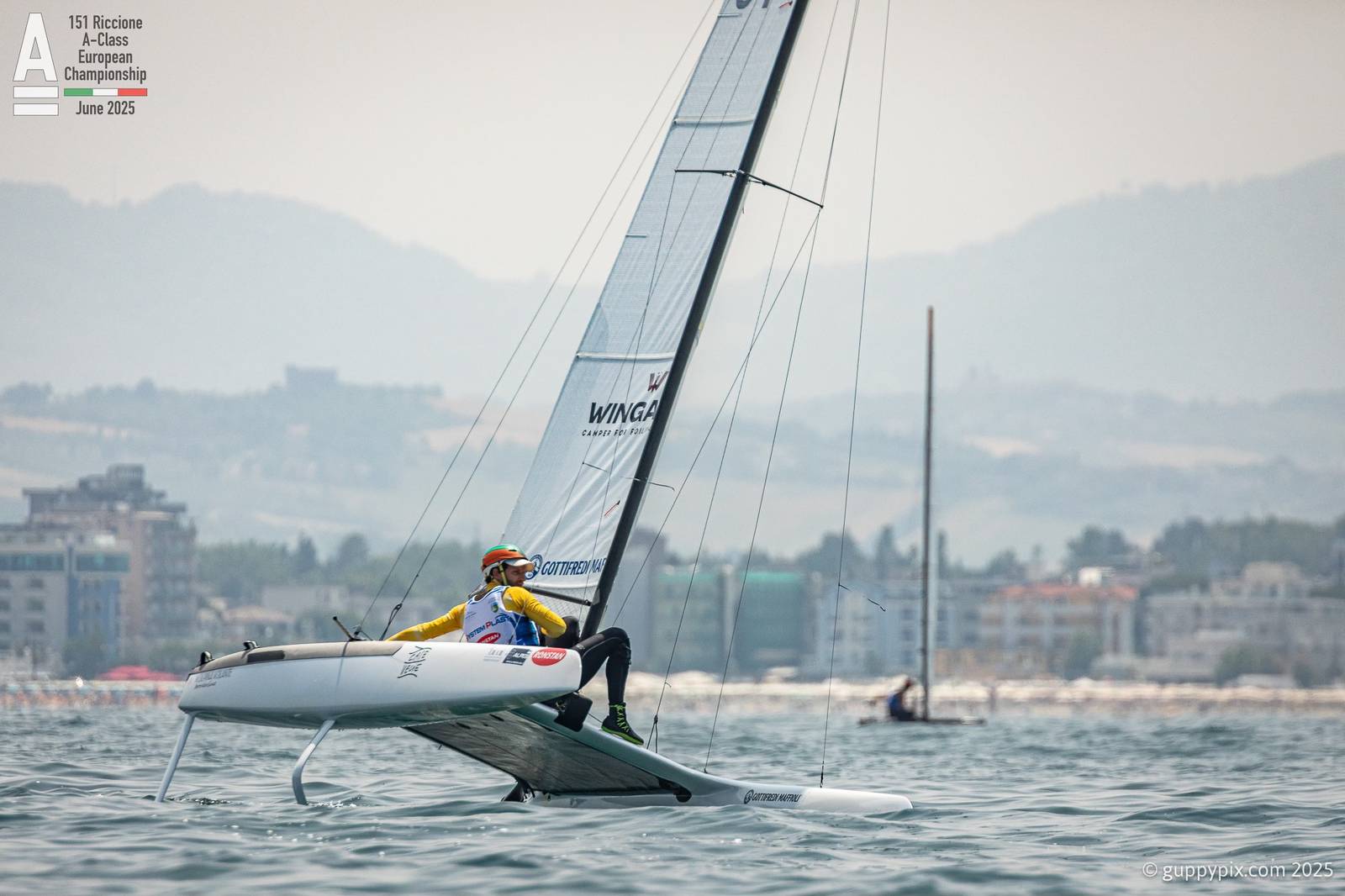
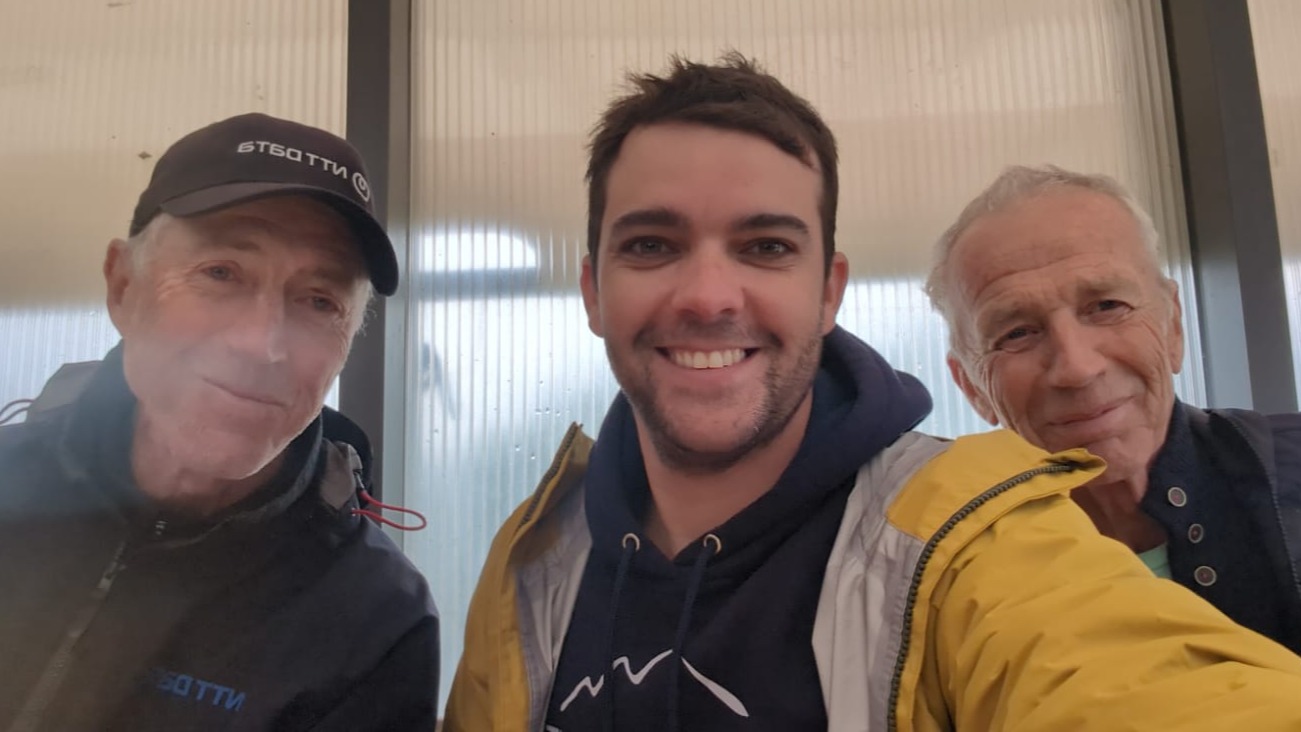
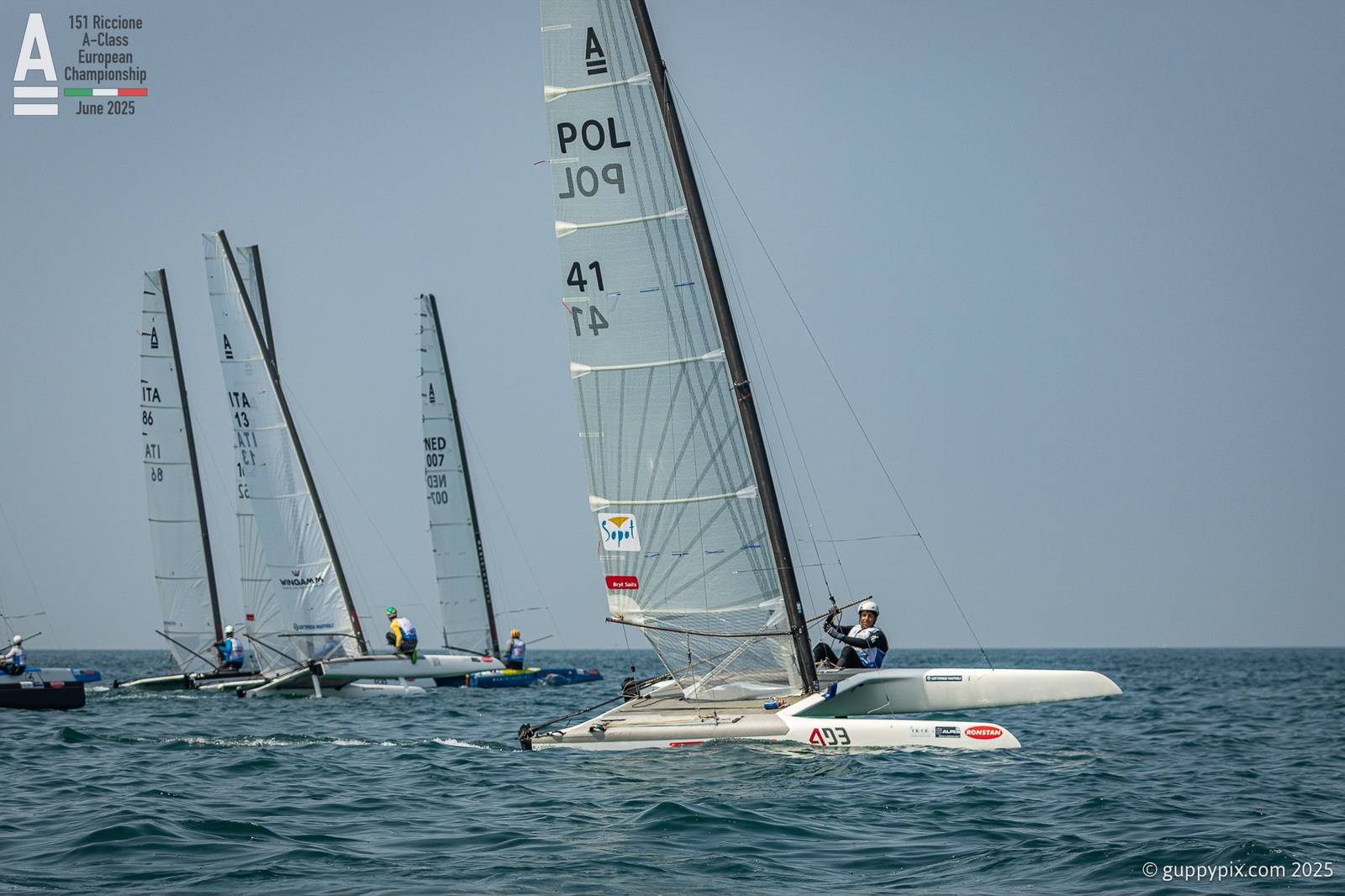
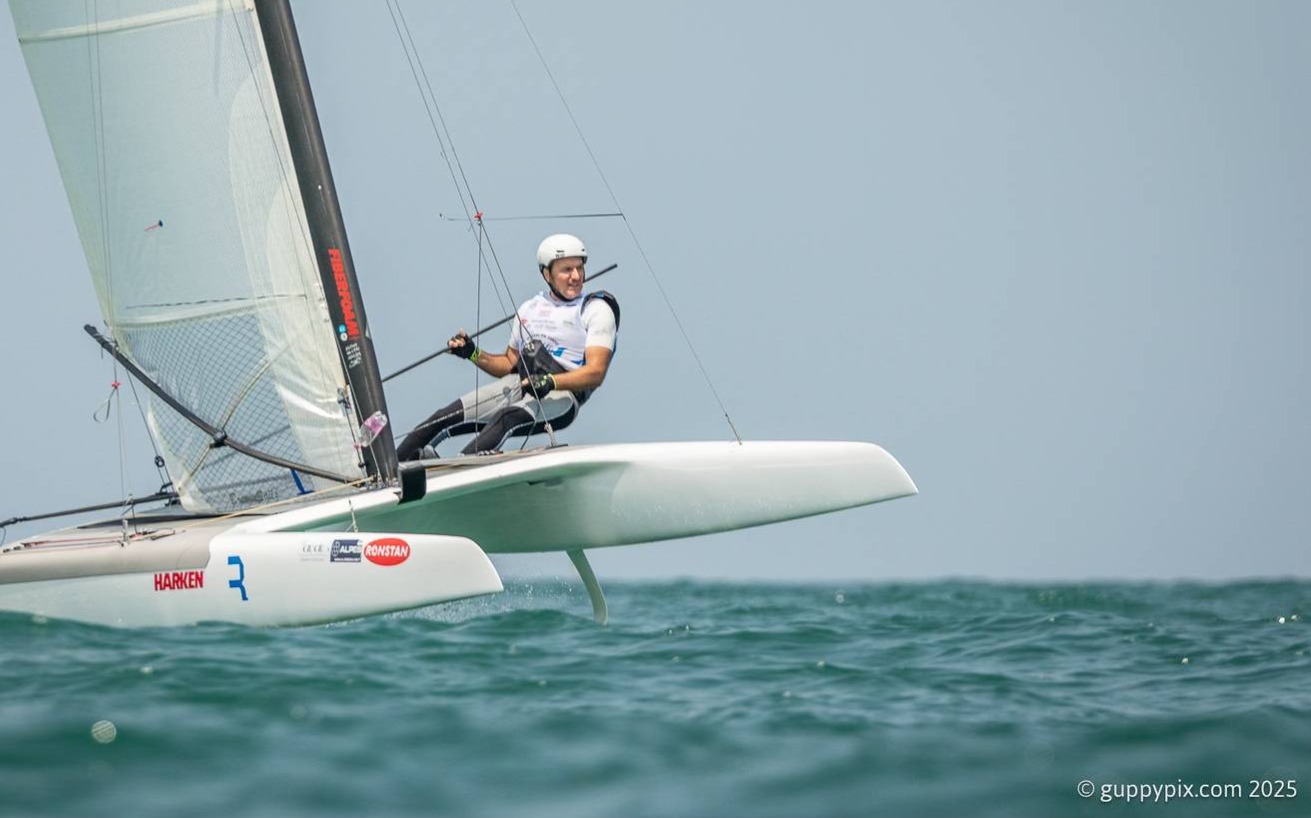
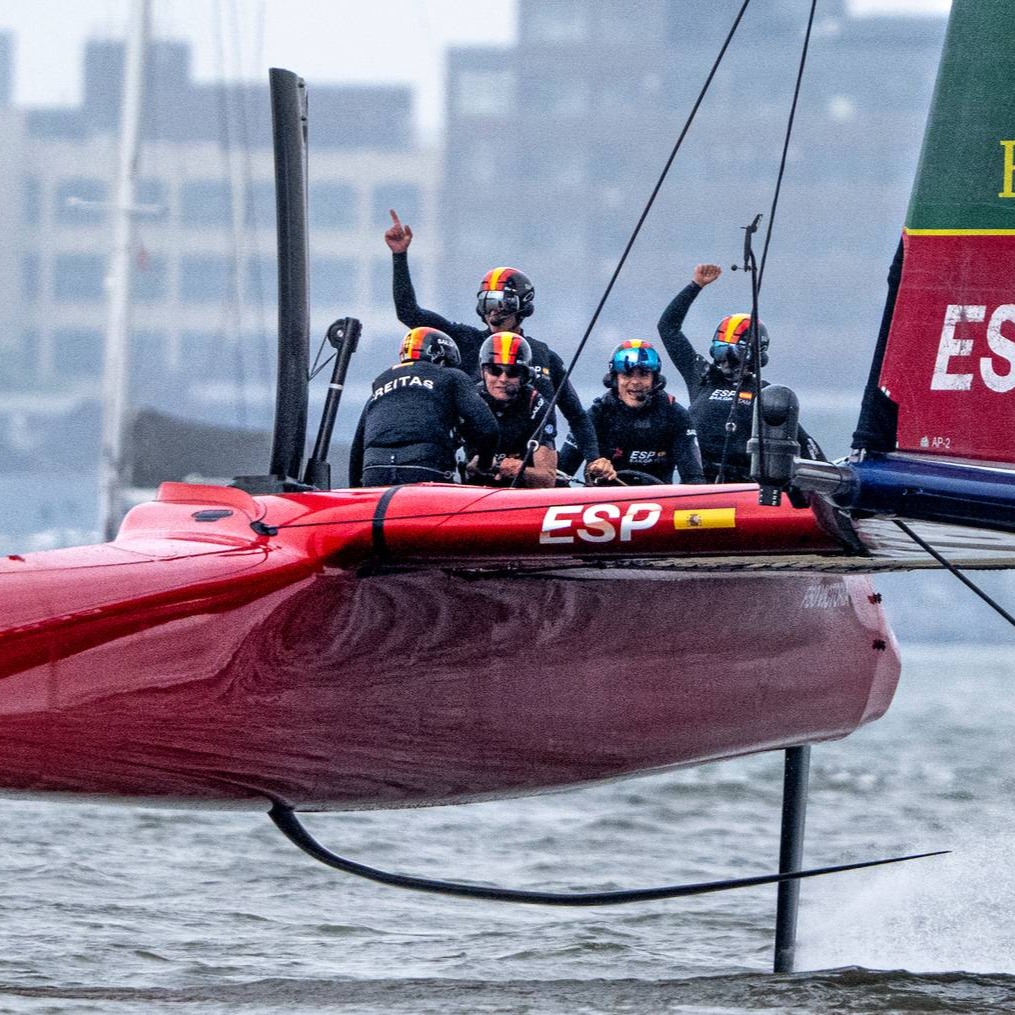
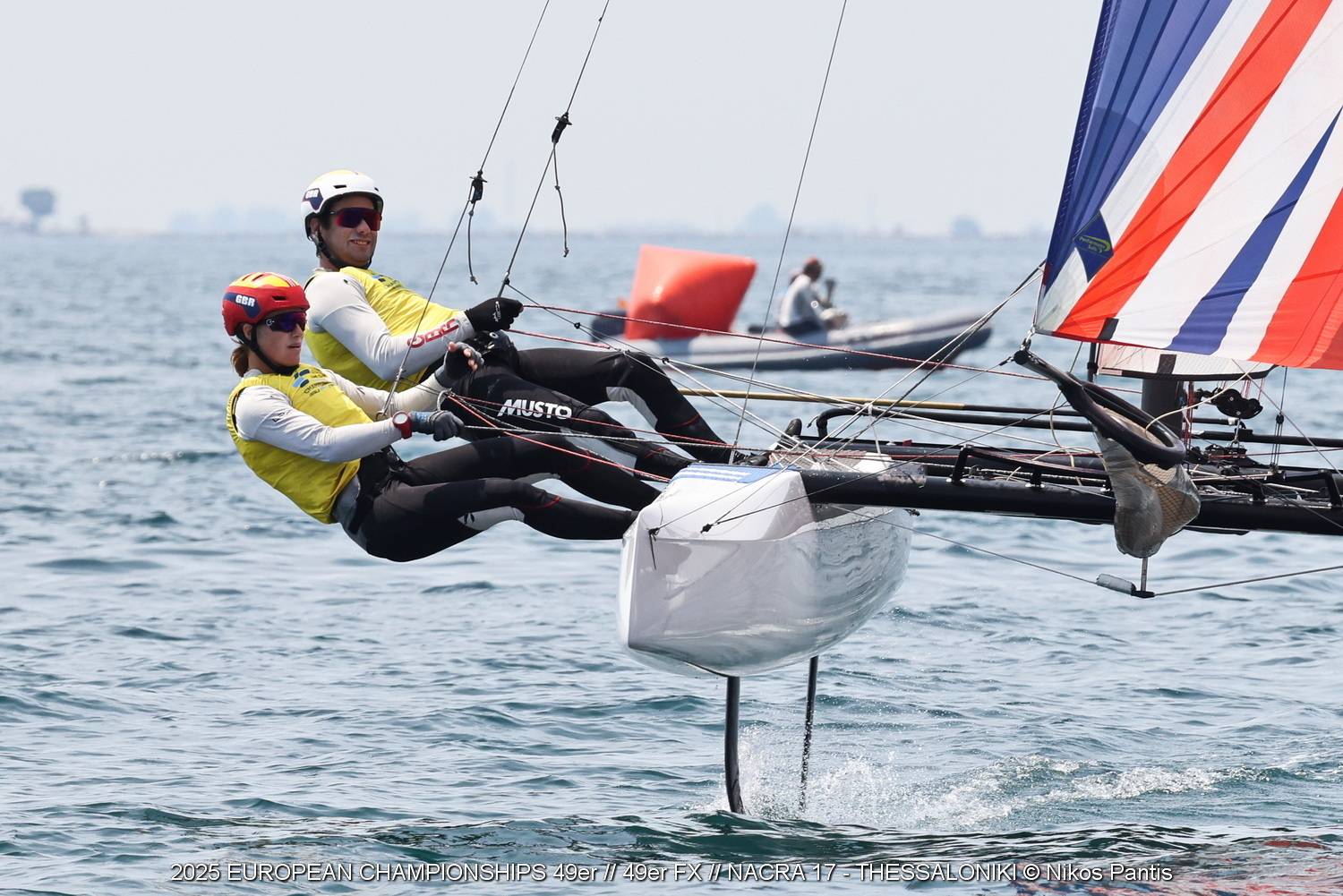
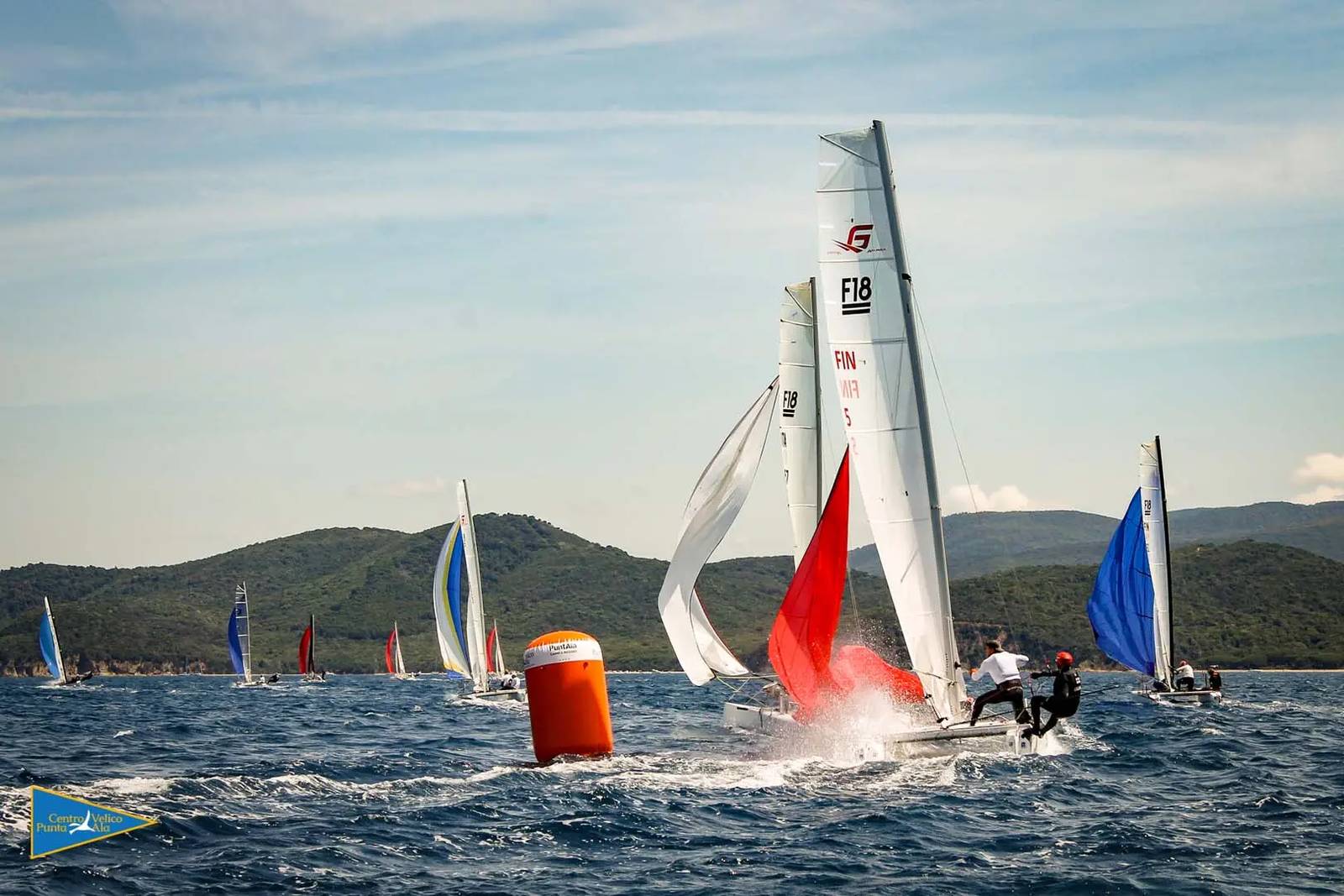
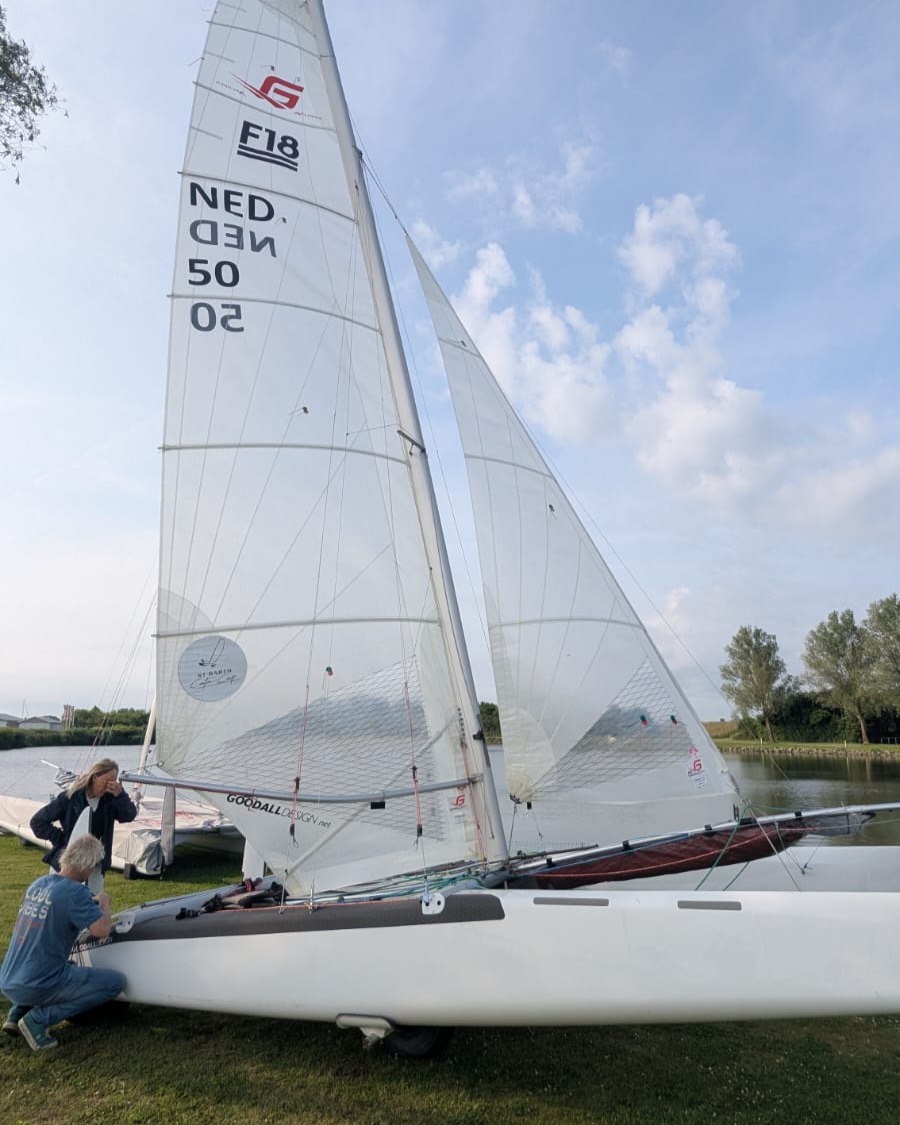
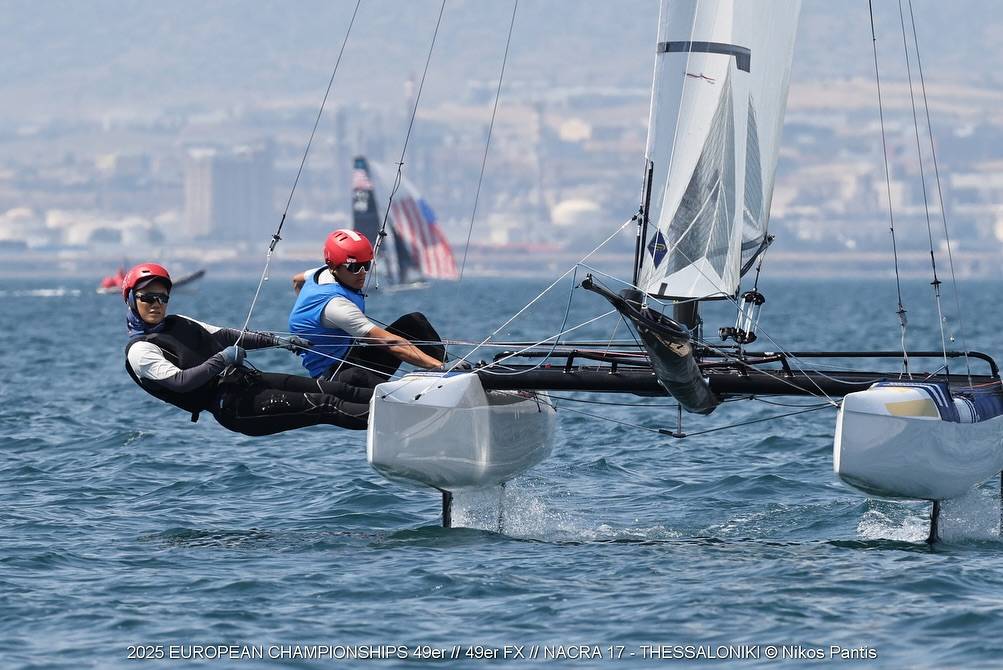



















Paul Larsen and Team SailRocket 3 are on the fast trac with experiments and Exlorations for the Mode of Operandi towards Multihull Foiling/Flying flavour of the Tall Ships, I would greatly Imagine when Our future Ocean-Crossers have Spec Numbers like the Clippers White Swan, Stad Amsterdam, or the LOA of (tall ships) National Training Ships like the Esmeralda of Libertad the VMG numbers will be so very Reliable and Consistent.
Maybe the dialed-in applications for future "0-Emissions" Multi-Purposed modern Tall Ships, that which is refer to as: Faster Sailing Foiling Freighter- (Multihull Foiling Clipper Ships) shall set the standard for World-Wide Service again, only this time Our Platforms and Rigs shall have Mo-Bigga and Mo-Bettah numbers for Passage, Freight, and Cargo; from 13 to 17 knots Daily averages to 25 to 35 knots in Tonnage. Just imagine this Project DrmSyhphny times (2)- Flying Katamaran at 141+ meters, Now! this would truely be a Modern Clipper Ship!?!
me ke aloha, malama i ke kai.
Keep Pulling the Apparent, maintain the most Seakindlines Effortless-Sweet-Glide